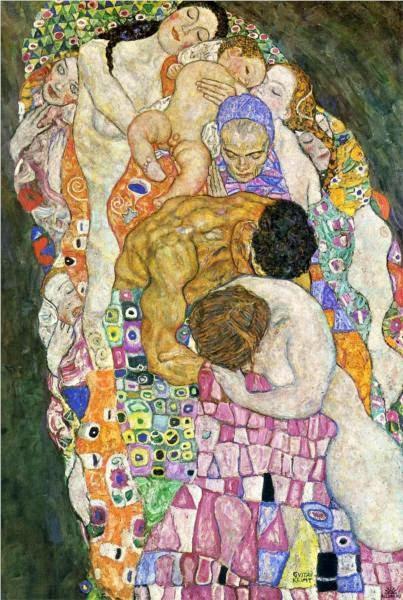by Nina

Death and Life by Gustav Klimt
We all experience aging as we move through time, from that first gray hair to the need for reading glasses or a twinge of arthritis to more dramatic changes. Eventually our bodies just don’t work as well as they did when we were young. (A formal definition of aging is “the process of a system’s deterioration over time.”) But have you ever wondered what causes aging? Or why human beings have the life span that they do? After all, a worm lives for only 10 days, a mouse for one or two years, and a dog typically over 10 years. Some kind of clockwork causes all living things to gradually age—yes, even worms get wrinkly when they get “elderly”— according to an apparent built-in schedule. But why does this all happen? And is there anything we can do about it?When Dr. Bradford Gibson first joined the Buck Institute for Research on Aging, he was looking forward to finding the answers to those questions. Much to his surprise, he discovered that there are many different and often conflicting theories of aging. He had somewhat naively assumed that there must be some general consensus on the basic questions of how and why we age. But, he says:
“As I examined theories such as the free radical theory of aging to antagonistic pleiotrophy, it became readily apparent that this was still early days of this discipline. While many of the processes described in these competing theories seemed plausible, they couldn’t all be correct. So working in this field was going to be much more confusing— and interesting — than I had originally imagined.”Since you might have read about telomere shortening or caloric restriction in the news, here’s a list of some of the theories of aging that Dr. Gibson confronted when he first joined the Buck Institute (with the ones he currently thinks most likely to be important in bold).
- Wear and Tear theory
- Error and Repair theory
- Neuroendoncrine theory
- Redundant DNA theory
- Genetic Control theory
- Free Radical theory
- Caloric Restriction/Nutrition
- Cross-Linking
- Waste Accumulation
- Gene Mutation
- Limited No. of Cell Divisions/Telomere Shortening
- Rate of Living
- Hayflick’s Limit theory
- Order to Disorder (entropy)
- Death Hormone
- Thymic-stimulatory theory
- Mitochondrial theory
- Autoimmune theory
- Antagonistic Pleiotrophy
That’s quite a list, isn’t it? But that’s not all; newer data have emerged in the last few years that have shown the importance of stem cell maintenance, modifications to your DNA (epigenetics), and senescence-associated inflammation as playing key roles in the aging process. I’m sharing all this with you for a couple of reasons. First of all, if someone out there tells you they can “stop” or even “reverse” aging—I've heard both claims myself—you should be very skeptical. Because right now with so much unknown about aging, there is no proof that any of these anti-aging solutions are effective (and, in some cases, like overuse of certain supplements or human growth hormones, they could actually harm you). And, second, I want to set your expectations. This blog has always been about healthy aging, never about stopping or reversing aging.
I’m going to be defining “healthy aging” and writing more about what it means in future posts, but, for now, you can check out my post Longevity vs. Morbidity (Ill Health).
Subscribe to YOGA FOR HEALTHY AGING by Email ° Follow Yoga for Healthy Aging on Facebook

